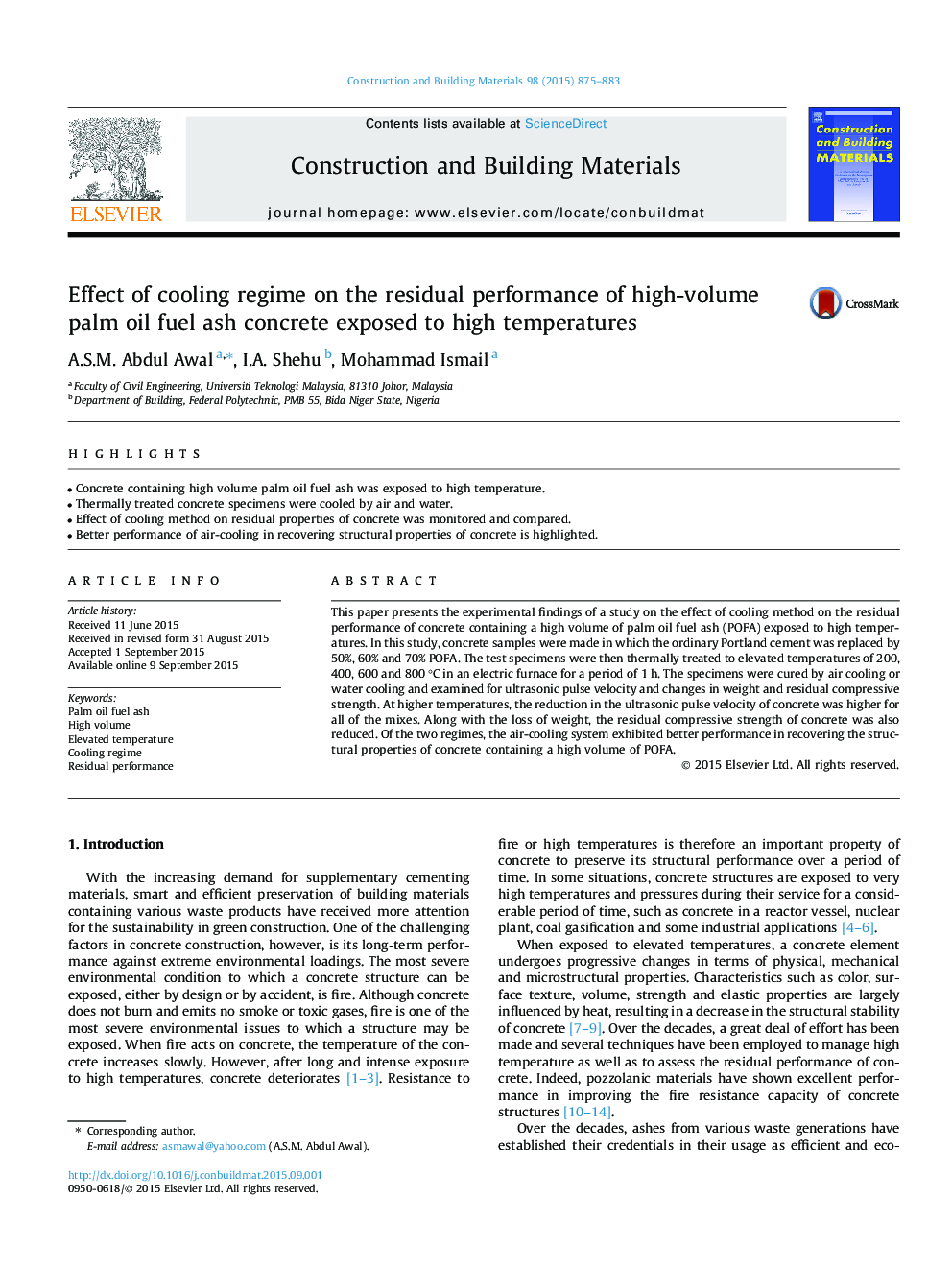| Article ID | Journal | Published Year | Pages | File Type |
|---|---|---|---|---|
| 256659 | Construction and Building Materials | 2015 | 9 Pages |
•Concrete containing high volume palm oil fuel ash was exposed to high temperature.•Thermally treated concrete specimens were cooled by air and water.•Effect of cooling method on residual properties of concrete was monitored and compared.•Better performance of air-cooling in recovering structural properties of concrete is highlighted.
This paper presents the experimental findings of a study on the effect of cooling method on the residual performance of concrete containing a high volume of palm oil fuel ash (POFA) exposed to high temperatures. In this study, concrete samples were made in which the ordinary Portland cement was replaced by 50%, 60% and 70% POFA. The test specimens were then thermally treated to elevated temperatures of 200, 400, 600 and 800 °C in an electric furnace for a period of 1 h. The specimens were cured by air cooling or water cooling and examined for ultrasonic pulse velocity and changes in weight and residual compressive strength. At higher temperatures, the reduction in the ultrasonic pulse velocity of concrete was higher for all of the mixes. Along with the loss of weight, the residual compressive strength of concrete was also reduced. Of the two regimes, the air-cooling system exhibited better performance in recovering the structural properties of concrete containing a high volume of POFA.
